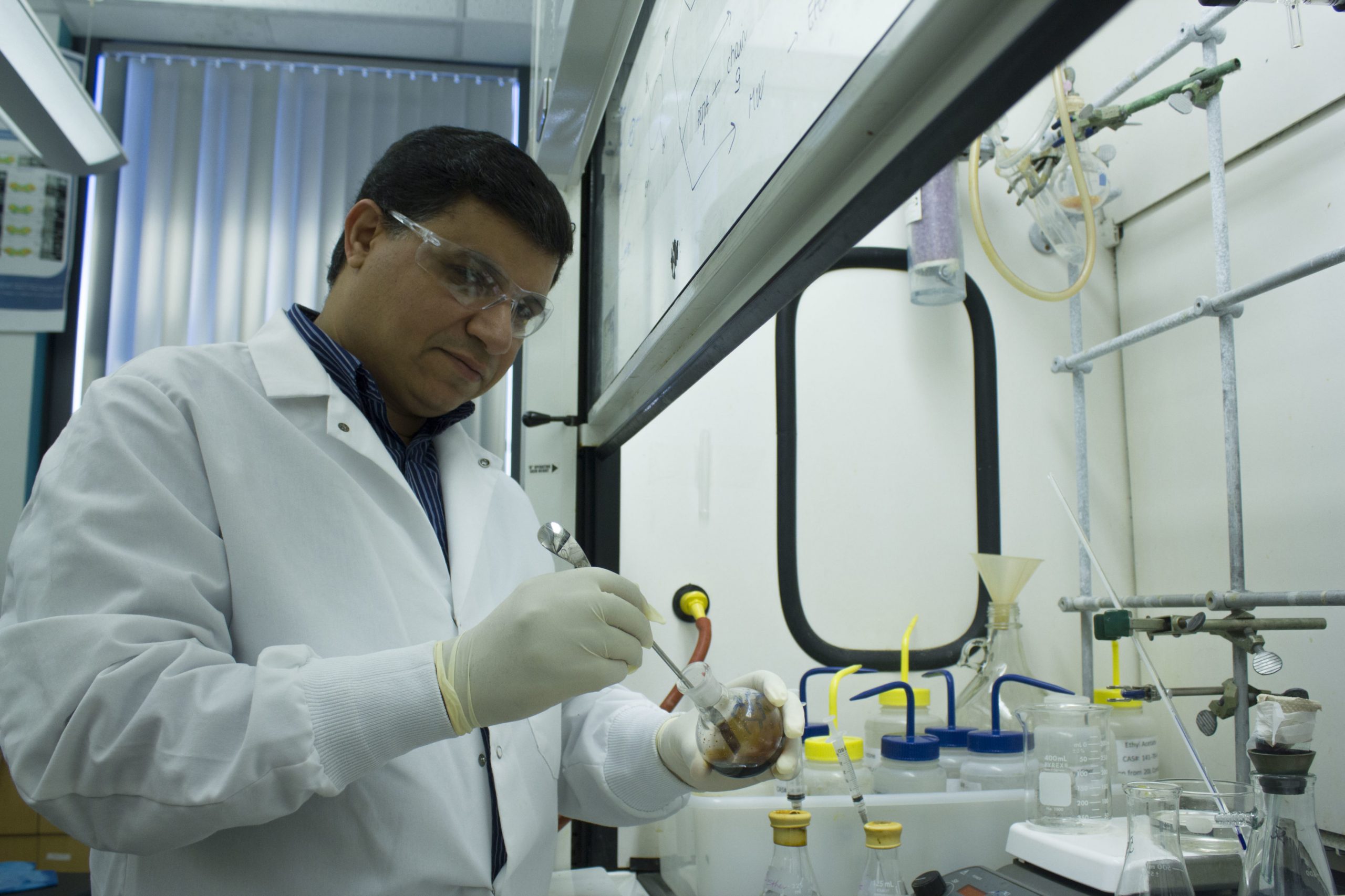
“The surgeon is only using his own naked eye to do the surgery,” Dr. Maged Henary,
Georgia State associate professor and researcher of organic and medicinal chemistry, said.
Early in his career, Henary used chemistry to develop temperature-induced color-changing ink for beer cans.
“I did some work with a company developing compound for thermochromic ink formulation color change for beer can,” Henary said.
Thermochromic ink is the same technology that makes the mountains appear on Coors’ beer cans.
But during that time, everything changed for Henary.
“In 2001, my sister was diagnosed with breast cancer,” Henary said. “She was 36 years old with three kids.”
Henary said surgeons ran lab tests, made diagnoses and used different imaging tools. His sister underwent chemotherapy and her health improved.
But even with new technology, Henary said the biggest obstacle in the operating room is still using the surgeon’s eye.
“[The surgeon is] doing his best, but he’s not sure,” Henary said. “In 2002, [my sister] came back to normal, but at the end of 2002, the cancer came back very aggressively. The surgeon doesn’t see everything. She died in 2003.”
His sister’s passing inspired him to pursue better cancer treatment technology.
Henary, originally from Egypt, obtained his Ph.D. at Georgia State. Before being appointed a lecturer at Georgia State in 2007, he worked briefly at Georgia Tech.
Henary wishes to make surgery more efficient, and the compound that he personally developed, MHI-148, does just that.
MHI-148 isn’t a compound that simply identifies cancerous tumors; it allows medical personnel to theoretically eliminate those tumors completely.
“We can make something to image the tumor and at the same time, kill the tumor cell,” Henary said. “So the compound can be targeting and the drug to kill.”
Henary’s compound is a major breakthrough for cancer treatment. The product has already been used in international cancer imaging research with Dr. Leland W.K. Chung, founder of DaZen Theranostics Inc., where MHI-148 was patented.
DaZen Theranostics Inc. is a Delaware-based startup company developing products which target cancer cells and function as contrast agents, or visibility markers.
MHI-148 stole their attention.
“This new therapeutic technology has shown to be safe and effective in animal studies and to deliver the current drug of interest and also a broad spectrum of other cancer fighting drugs to aggressive and metastatic cancers, without damaging normal healthy tissues,” YuPing Cheng, chief executive officer of DaZen Theranostics Inc., said in a press release.
“I’m very happy because the compound I developed is in [its] second phase trial,” Henary said.
Phase two studies the efficacy of the compound. The duration of this second phase can stretch from several months to up to two years.
DaZen provides the resources and guidance Henary needs to further develop and implement his compound.
“[DaZen] takes this compound and moves it because, alone, I can’t do anything. If a company steps in and tries to take this and develop it further, this is a very good thing,” Henary said.
This compound comes at a time when cancer diagnoses are at a high.
In 2018, there will be an estimated 1,735,350 new cancer cases, 609,640 of which are projected to result in death, according to a report by the American Cancer Society.
That’s 1,670 deaths per day.
Yet, those numbers don’t amount from cancer alone.
“You go to doctor [and the] doctor does some lab testing,” Henary said. “All these kinds of [tests] diagnose cancer. They [image] different organs, so only [a small amount of the agent] goes to the tumor. This is why cancer patients suffer a lot, because sometimes it gives a false positive [and] a false negative.”
A misdiagnosis can be fatal. According to a study published in the British Medical Journal,
they affect 12 million U.S. adults every year.
But thankfully, MHI-148 cuts out the guesswork for surgeons.
“We can direct the drug, but we found out [the] compound itself can target the [tumor]. So, this compound is not attached to any ligand, or small molecule like a protein, [making] the size very optimal,” Henary said.
MHI-148 aids surgeons by targeting and killing the tumor via fluorescing—essentially lighting up—due to the compound’s high molecular brightness.
Molecular brightness is not a visible brightness but rather a brightness detected by optical imaging, measuring photons (or light particles) emitted.
MHI-148 is useful for surgeons because it fluoresces and absorbs photons in the near-infrared region, where surgeons can use optical imaging for cancerous tumors while operating. This is much like a blacklight illuminating stains previously undetectable to the common eye.
“The goal of this technology is the patient during the surgery can be injected. This is called optical imaging, so the surgeon can inject this agent during surgery and can circulate and go to tumor cell and the surgeon can cut the tumor, and it’s called image guided surgery,” Henary said.
Henary’s research at Georgia State persists, continuing to create technology better than, but not in spite of, our own shortcomings.
“This is really why I would hope this technology can help the surgeon, to clean this tumor and get it all out,” he said.
